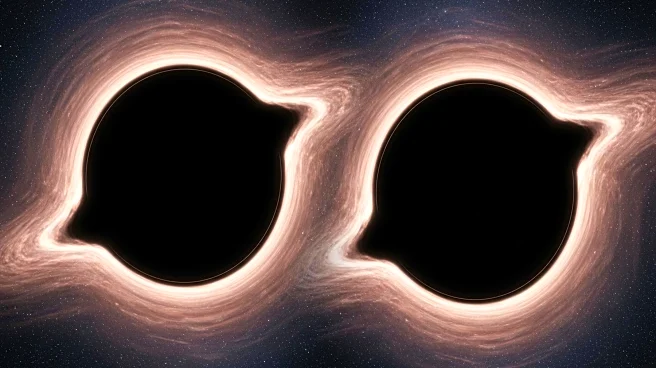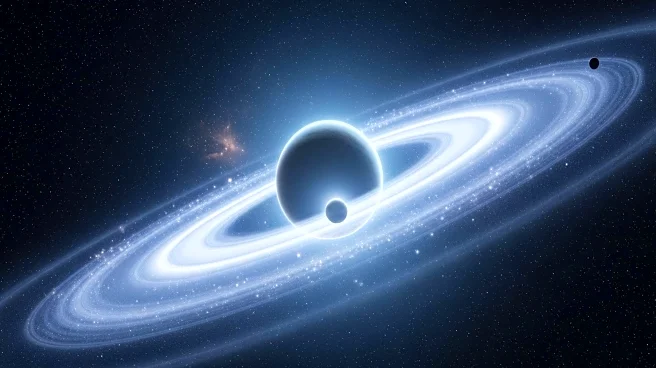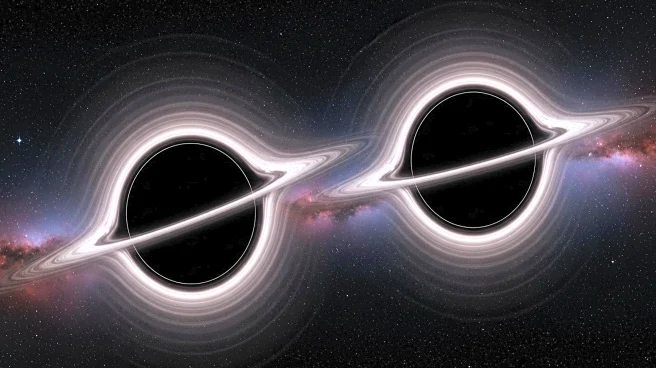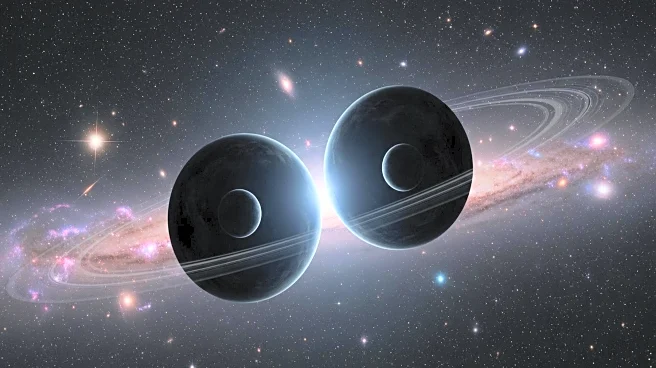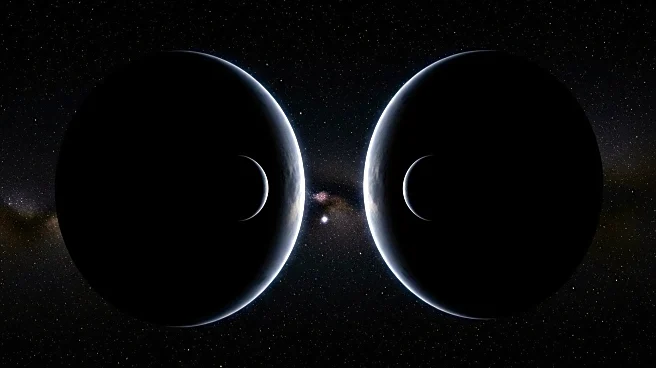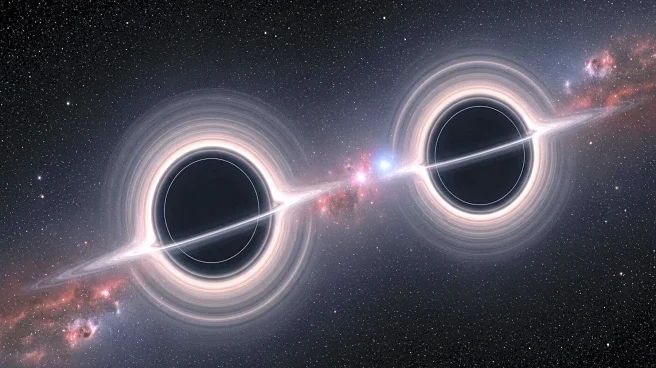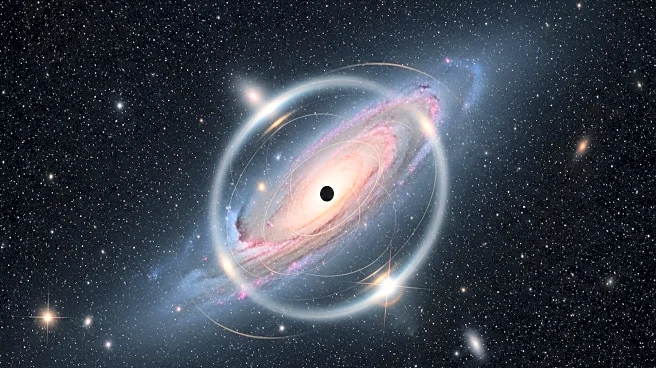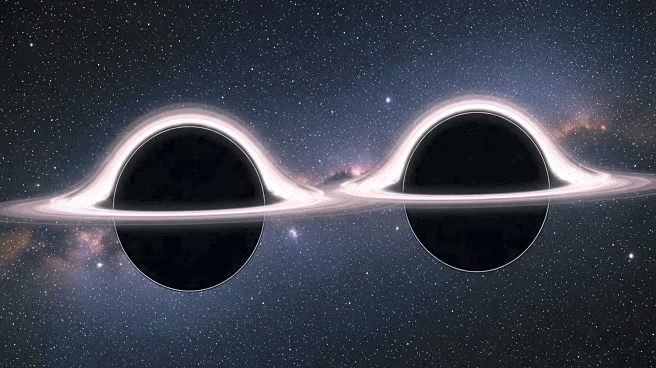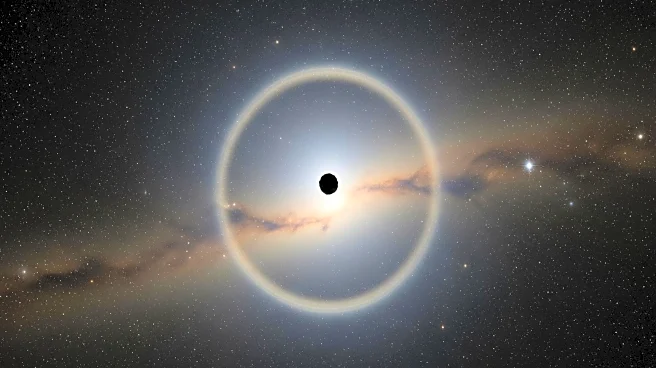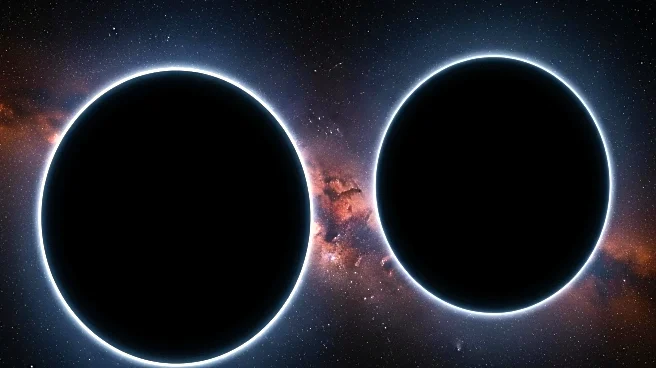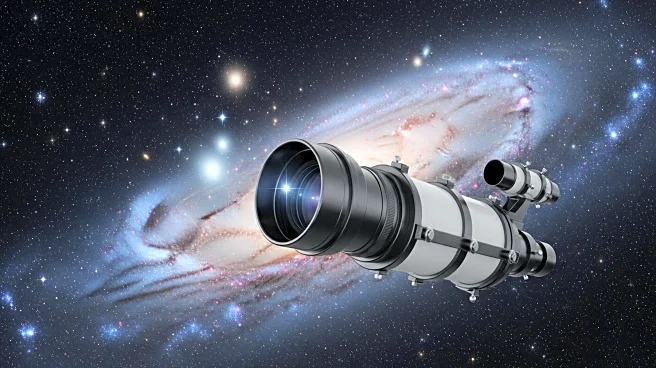What is the story about?
What's Happening?
Astronomers have successfully captured a radio image of two supermassive black holes orbiting each other for the first time, providing visual confirmation of a phenomenon that has been theorized for decades. The image reveals the black holes within a bright quasar known as OJ287, located approximately 5 billion light-years away in the constellation Cancer. Quasars are extremely luminous regions at the centers of galaxies, where supermassive black holes cause surrounding gas and dust to heat up and glow. This discovery offers the clearest evidence yet of binary black holes, which are two gravitationally bound black holes. The quasar OJ287 has been observed for over a century, with its brightness fluctuating in a regular 12-year cycle, suggesting the presence of two orbiting black holes. The confirmation came from radio observations using Earth-based telescopes and the RadioAstron satellite, which provided a view 100,000 times sharper than typical optical images.
Why It's Important?
The successful imaging of two orbiting black holes is a significant milestone in astrophysics, confirming theories that have been proposed for decades. This discovery enhances our understanding of black hole dynamics and the behavior of quasars, which are among the brightest objects in the universe. The ability to visually confirm the existence of binary black holes opens new avenues for research into gravitational waves and the eventual mergers of these cosmic entities. This finding could lead to advancements in the study of galaxy formation and evolution, as well as the role of black holes in these processes. The research also demonstrates the capabilities of combining Earth-based telescopes with satellite technology to achieve unprecedented resolution in astronomical observations.
What's Next?
The discovery of the orbiting black holes in quasar OJ287 provides a unique opportunity for astronomers to observe their motion in real time. As the smaller black hole continues its 12-year orbit, researchers will be able to study the dynamics of the system and the effects of gravitational interactions on the surrounding material. This ongoing observation could yield insights into the behavior of particle jets emitted by black holes and their impact on the quasar's brightness. The findings may also contribute to the development of new models for predicting the behavior of binary black holes and their eventual mergers, which are key sources of gravitational waves. Continued monitoring of OJ287 and similar systems will likely enhance our understanding of the universe's most extreme environments.
Beyond the Headlines
The imaging of two orbiting black holes raises intriguing questions about the nature of quasars and the role of black holes in galaxy formation. The ability to visually confirm binary black holes challenges previous assumptions and provides a new perspective on the gravitational interactions that shape the universe. This discovery may prompt further exploration into the ethical and philosophical implications of understanding such distant and powerful phenomena. Additionally, the technological advancements required to achieve this level of observation highlight the importance of international collaboration in scientific research, as demonstrated by the use of the Russian RadioAstron satellite.
AI Generated Content
Do you find this article useful?
